Let us consider a very simple example

simulate this circuit – Schematic created using CircuitLab
And its Thevenin equivalent.

simulate this circuit
Lets start by assuming RL is not there we can easily calculate Vth as it is a simple potential divider \$ Vth = V1 \cdot \dfrac{R2}{R1+R2} = 5V \$
This is the open circuit voltage. Now if we load this circuit the voltage across RL will fall so we need to calculate Rth.
To calculate Rth we replace all voltage sources with a short circuit because if you load a perfect voltage source the voltage does not change so its output impedance is \$ \dfrac{\text{d}V}{\text{d}I} = \dfrac{0V}{\text{d}I}= 0 \Omega \$. We replace all current sources are open circuit because if we load a current source we can change the voltage but not the current; it output impedance is \$ \dfrac{\text{d}V}{\text{d}I} = \dfrac{\text{d}V}{0}= \infty \Omega \$.
We are therefore replacing all sources by their equivalent output impedances. Calculate the resistance we see across the output: In our case an open circuit RL. In this case Rth is simply \$ 500 \Omega \$ R1 and R2 in parallel
We have replaced the sources with their equivalent impedances because we want to know how the output changes with load and this is one convenient way to calculate Rth.
A second approach would be to short the output 'RL' and calculate the current \$ I_{sc} = \dfrac{10 \text{ V}}{1000 \Omega} = 10 \text{mA} \$ giving \$ Rth = \dfrac{Vth}{I_{sc}} = \dfrac{5 \text{ V}}{10 \text{ mA}} = 500 \Omega \$ as before.
A third approach is to apply a test current and see how much the voltage drops. \$ Rth = \dfrac{\text{d}V}{I_{test}} \$. With a 10mA test current the output drops 5V giving \$ 500 \Omega \$ as shown above a more rigorous analysis should show you get \$ Rth = 500 \Omega \$ for any test current.
Without Rth the output voltage would not be load dependant.
If we now set RL to \$ 500 \Omega \$ we see the output voltage is 2.5V either by considering R2 and RL in parallel in the the top circuit or using the Thevinin equivalent.
I would encourage you to do this for your self using several simple circuits to convince yourself of the validity of this approach.
Note: Thevenin says nothing about what is happening inside the original circuit only how it appears to behave externally.



